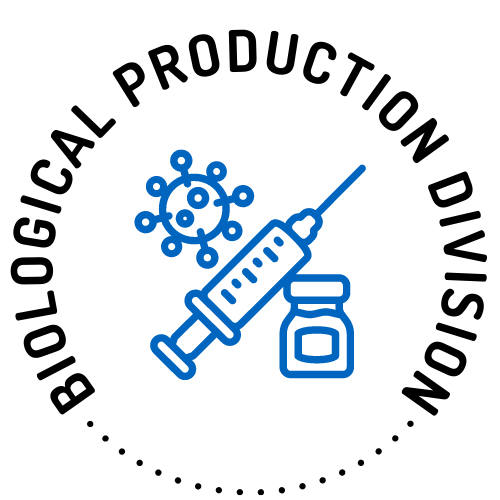Antiserum that contains specific antibodies against an infective organism or poisonous substance. This subunit of BPD mainly works on producing, processing and testing of sera products.
Sera Processing Lab/ Anti-sera manufacturing laboratory unit
National Institute of Health is the sole manufacturer of Anti Snake Venom Serum (ASVS) and other sera products since 1967. The old sera processing laboratory was initially designed to produce up to 25,000-30,000 (10m vial) per annum according to the country’s demand. Keeping in view the increasing population size and country demand for anti snake venom serum. There was a dire need to improve the production capacity of indigenously produced anti venom for the poor population of the country.
Pakistan is the world’s sixth most populated country with 220 million residents and about 70% of the population residing in rural areas of the country. It lies in the most important geographical region of the world with respect to snake bite, due to extreme climatic condition topography and variety of indigenous venomous snake species widespread in four main provinces. Despite very less available published data on incidence annual 25,000 to 30,000 cases are reported to have serious envenomation due to snakebites.
The government of Pakistan has contributed substantial funding to expand the local production of anti venom against native snake species. Recently a new cGMP compliant manufacturing plant has been established at NIH to for capacity enhancement of anti snake venom and other sterile biological products.
The Manufacturing Laboratory
The new Sera processing laboratory is well equipped with the latest machinery and equipment with latest machinery and equipment as per international requirements and standards. The project is now functional for manufacturing of anti-snake venom serum and other sterile products as per country’s requirements.
Our Products
- Poly-valent anti-snake venom serum (Poly-ASVS) against medically important most prevalent venomous snake species (cobras, Russel Viper, Kraits and Echis)
- Anti-rabies serum ARS (Enquin origin)
- Anti-Tetanus serum and Anti diphtheria (in future)
Anti rabies serum : (Liquid purified equine immunoglobulins (ERIG).
Rabies is a vaccine-preventable, viral zoonosis belonging to neglected tropical diseases that can infect all mammals, but over 99% of all human death from rabies are caused by domestic dogs.
Background
According to the World Health Organization (WHO), 59,000 people die from this disease yearly, of which 30–50% are below 15 years of age. Over 95% of the human rabies cases are concentrated in Asia and Africa, with Asia having 60% of the total number of cases . Dog bites are the most important cause of human deaths from rabies in those regions. Rabies is a neglected health issue in Pakistan and it is estimated that 2,000 to 5,000 people die of rabies every year.
However the majority of cases still remain underreported, victims either do not seek the right treatment at the right time as being ignorant of the associated risks with rabies. Overall treatment cost of dog bite cases is high and beyond the reach of the common public.
http://phrc.org.pk/rabies.html
Symptoms
The rabies virus infects the central nervous system. The incubation period of the disease can vary from 1 week to 1 year, though it is typically 2–3 months. Early symptoms of a rabies infection may include a fever with pain and unexplained tingling or burning feeling at the bite site ((paranesthesia). The virus spreads to the central nervous system later on , causing brain and spinal cord inflammation . If the appropriate medical care after a potential rabies exposure is not received , the virus can cause death eventually.
There are two types of rabies on the basis of symptoms. Furious rabies causes signs of hyperactivity, excitable behavior, hydrophobia (fear of water) and sometimes aerophobia (fear of drafts or of fresh air). Death occurs after a few days due to cardio-respiratory arrest.
Paralytic rabies, which is responsible for 20% of the total human cases, runs a less usually takes longer course than the furious form. Muscles gradually become paralysed, starting at the site of the bite or scratch that slowly leads to coma and ultimately death. The paralytic form of rabies is often misdiagnosed, contributing to the under-reporting of the disease.
Prevention and control of human rabies
Rabies can be prevented by vaccinating animals especially pet dogs , staying away from wildlife that may cause the potential rabies exposure, and immediately getting medical care before onset of symptoms. Vaccinating dogs is the most cost-effective strategy for preventing rabies in people, and human rabies vaccines exist for pre-exposure immunization.
Treatment of rabies
WHO recommends 2 main immunization strategies for the prevention of human rabies: Post-exposure prophylaxis (PEP) and Pre-exposure prophylaxis (PrEP).
Administration of rabies immunoglobulin (RIG) to wounds classified as category III exposure, is the key factor in wound management. • Bites to the head, neck, face hand and genitals are category III exposures • Infiltrate RIG into the depth of the wound and around the wound • RIG should be infiltrated around the wound as much as anatomically possible • Remaining RIG should be injected at an intramuscular/ intradermal site distant from that of vaccine inoculation .
20 IU/ kg for Human RIG (HRIG) or 40 IU/ kg of Equine RIG (ERIG) dose is recommended by WHO • Total recommended dose should not be exceeded • If RIG is unavailable on first visit, its administration can be delayed by a maximum of 7 days from the date of first vaccine dose • If the calculated dose of RIG is insufficient to infiltrate all wounds, sterile saline may be used to dilute it 2 to 3 fold to permit thorough infiltration.




